Chinese New Year in Singapore
Tags : Fairs & Festivals
Chinese New Year 2025 Dates : Wed, 29 Jan, 2025 – Wed, 12 Feb, 2025
Chinese New Year, Singapore Overview
Synonymous with bright colours, celebration, revelry, sheer joy, and love; the Chinese New Year is undoubtedly one of the most important festivals celebrated in Singapore. Also referred to as the Spring Festival or the Lunar New Year, it falls on the first day of the first month of the traditional lunisolar Chinese calendar and is a time of merrymaking. Being the only festival which calls for a public holiday for two consecutive days, Chinese New Year is one of the favourites among the Singaporeans.
Celebrations for the Chinese New Year begin weeks before the New Year even starts, and visitors flock to places like Chinatown, City Hall and Marina Bay Floating Platform in large numbers, to witness the traditions and cultural practices taking place there - the exchanging of mandarin oranges, preparations for the reunion dinners, flea markets, seasonal markets and so on. The Spring Festival in Singapore is imbued with a lot of chatter and excitement, and it is a great opportunity for people to closely witness the Singaporean way of celebrating this festival, and of taking part in the festivities.
Read More on Chinese New Year
Origin & Legend of Chinese New Year
The next day, when the villagers came back to their village, they saw that the Nian had fled. They thought that the old man was an incarnation of God who had come to save them. They understood that the beast was terrified of the colour red as well as the loud noises from the firecrackers. From then on, the villagers wore red clothes and decorated their houses with crimson coloured lanterns and spring rolls. They set off loud firecrackers to ward off the Nian. The beast never set foot in the village again. Later, he was captured by a Taoist Monk named Hongjun Laozu, after which the Nian went back to a mountain.
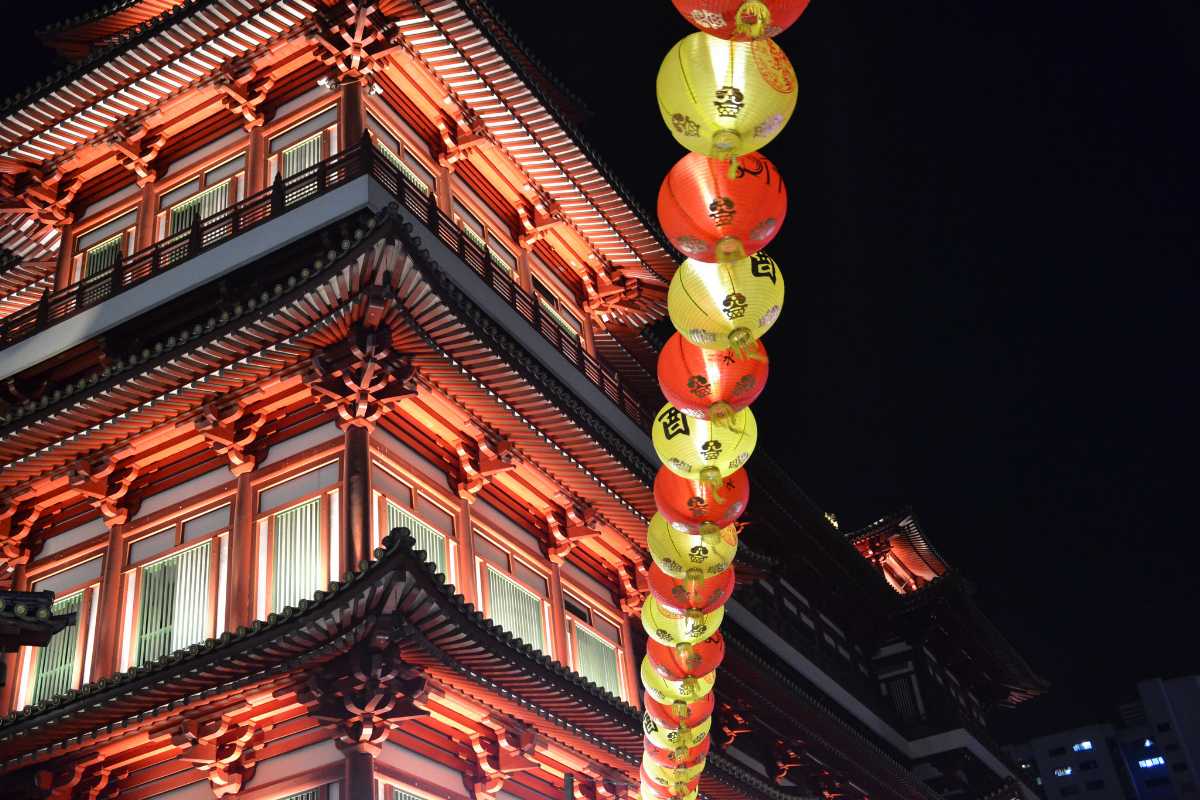
Lunar New Year Traditions
Most of the rituals of the Chinese New Year in Singapore are meant to welcome the oncoming year with a clean state of mind as well as body so that the family and the household can welcome prosperity and good luck in their lives.
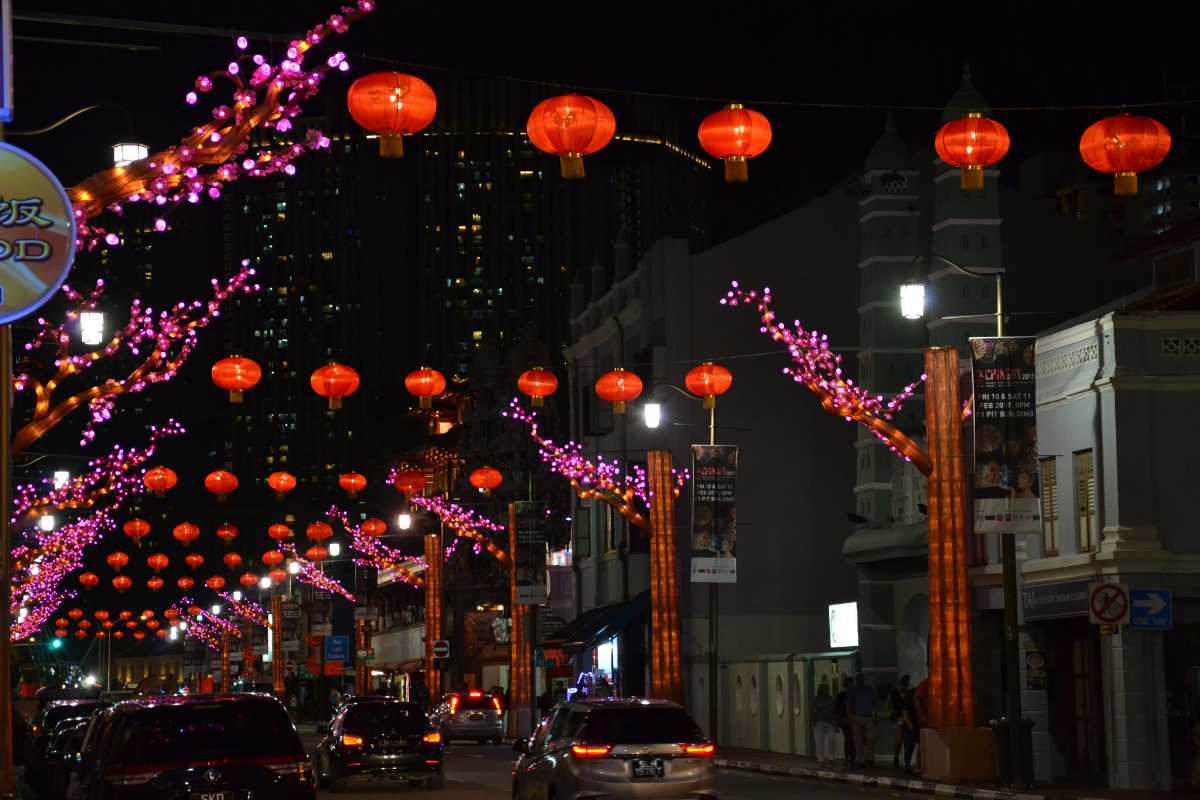
Before the holiday season, people start to clean their houses to get rid of any ‘huiqi’ or inauspicious breathes that might have been collected over the previous year. It is believed that the Kitchen God descends from heaven for his yearly inspection during these festivities, and thus the house should be cleaned thoroughly to please him. All brooms, however, must disappear on New Year’s Day, since people worry that sweeping at that time will also sweep away the newly arrived good luck. Similarly, haircuts are also not allowed on New Year’s Day. This is because the Chinese word for ‘hair’ is the same in sound as the Chinese word for ‘luck’, and thus luck would also be lost with the hair if cut on the New Year’s Day.
Worshipping
During Chinese New Year festivities in Singapore, people visit the temples and ancestral halls, as well as the tombs of the deceased to meet their ancestors. They also write lucky messages on scrolls and leave them on household gates. Most people also pray to the God of Wealth ‘Cai Shen Yeh’ during this time to get more wealth in the coming year.
Reunion Dinner
The reunion dinner which takes place on the New Year's Eve is considered to be the most elaborate meal of the year for the Chinese. Members from all generations gather together in their best attire to enjoy this grand meal, with many even flying in from far off just to attend the dinner party. Long noodles are characteristic of any Chinese Reunion dinner and are meant to symbolize long life. The last course of the meal necessarily comprises of fish, but it is deliberately not finished. This is because people believe in the Chinese saying 'nian nian you yu', which means that 'every year there is leftover'. In other words, this tradition translates to ‘being blessed every year’.
The “Lo Hei” Tradition
The seventh day after the New Year is known as ‘renri’ or human day, where families practice the ‘Lo Hei’ tradition, which means ‘tossing up good fortune’. Families and friends meet to toss up the ingredients of a raw fish salad, chanting auspicious good wishes at the same time to bring in good luck. These ingredients comprise of white and green radish along with carrots, pickled ginger, and slices of raw fish, all generously drenched in a dressing made of plum sauce and five-spice powder. It is believed that the more the number of people to toss the ingredients, the better the fortune will be.
Other than these traditions, a lot of colourful and fun activities are organised, including lion dances, lantern festivals, fireworks and people making loud noises by striking pieces of bamboo together, or setting off crackers.
Time of Feasting
- The Chinese believe that it is necessary to have at least one Mandarin orange in the house, or better still, two of them, since the fruit symbolizes abundance and prosperity. Thus, people also decorate their homes with these oranges to imply their desire to be able to earn everything that they need in the coming year.
- Children are fed with ‘Nian Gao’, which are cakes made from glutinous rice since they represent growth. In Chinese, ‘Nian’ translates to year, and ‘Gao’ translates to tall, and the cakes, therefore, symbolize progress and improvement.
- Dry watermelon seeds are also consumed at the house of friends and relatives. In Chinese, these seeds are called ‘Gua zi’, and they signify having a large number of children. These seeds are thus an important symbol, especially for the newly married.
- - On the fifteenth and the final day of the New Year, members of the family also gather to make round dumplings shaped like the full moon, to symbolize family reunion as well as perfection.
Red - The Colour of Chinese New Year
It is also a tradition for married couples to give a red packet or a ‘hong bao’ to all children as a monetary gift. The packets have the character of Fu or Good Fortune on them, and the money is always in even digits to give blessings and good luck to the recipient.
Celebrating Chinese New Year in Singapore
Chinatown
Chinatown is the central hub where most of the New Year action and frenzy takes place. Weeks before the people ring in New Year, Chinatown starts to buzz with activity, and merchants line the Terengganu and Pagoda Street with small colourful stalls. A lot of Chinese memorabilia and decorative items are on sale at these stalls, so in case you wish to buy some souvenirs, this is the place to go to during the New Year time. This is also the place to get traditional New Year cookies, baskets of mandarin and red paper decorations from, to join in other people in celebrating their age-old traditions.
How to Reach: The Chinatown MRT Station is right at the heart of the district. Also, Clarke Quay, Raffles Place, Tanjong Pagar and Outram Park are all just a short walk away from Chinatown. Buses 2, 12, 33, 54, 63, 124, 143, 147, 190, 851, 961, 970, and CT1 can also take you to Chinatown.
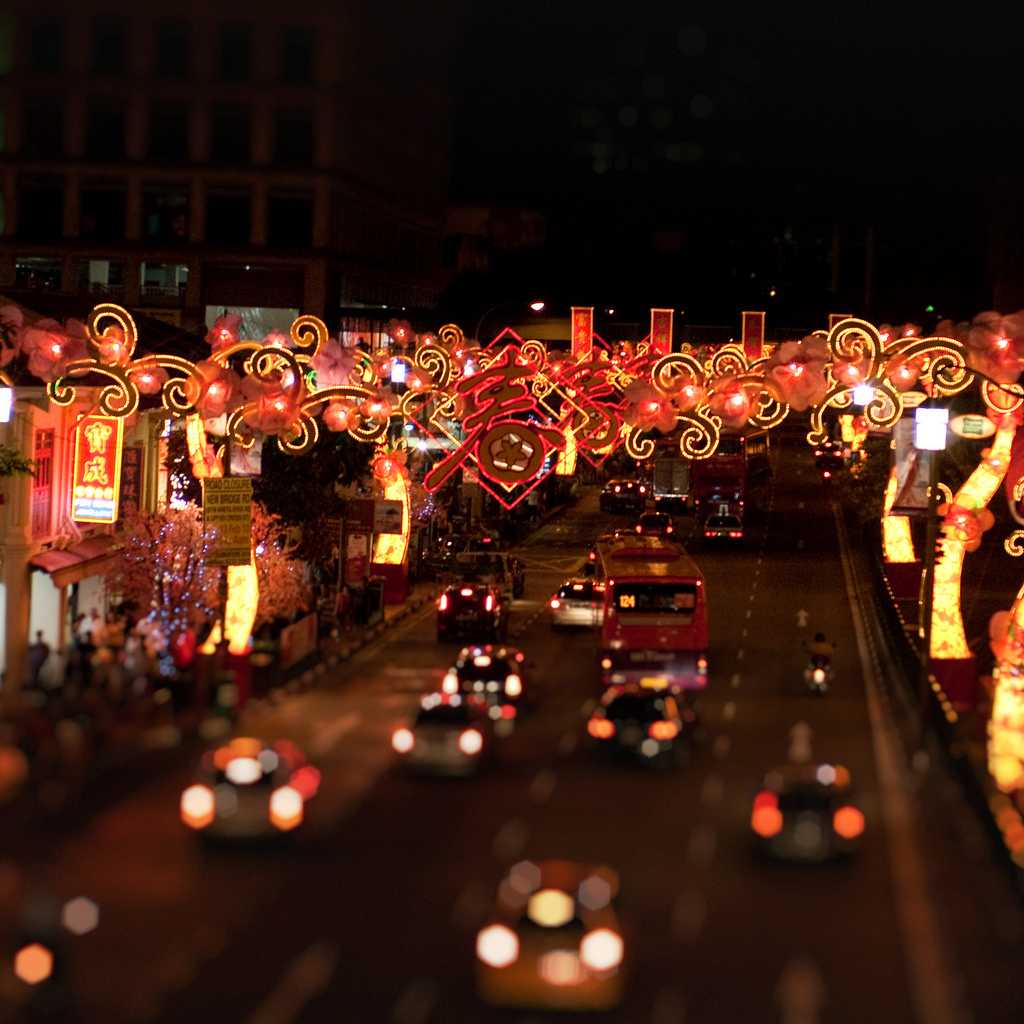
The Chinese Festival of Arts is a 10 day-long event that begins from the fifth day of the New Year and then blends with the celebrations of the River Hongbao. Numerous visual, as well as performing arts, are arranged for the entertainment of the guests, who continue to flock in large numbers to the promenade on all the ten days to enjoy the celebrations.
Chingay Parade at the City Hall
The Chingay Parade is the main public event that takes place to commemorate the occasion and is held eight days after the New Year Holiday. ‘Chingay’ is a Hokkien phrase which translates to ‘the art of costume and masquerades’. Comprising of a long stream of floats which highlight the signs of the Zodiac, the Chinese deities, etc. amidst a carnival atmosphere; the festival has now grown into an international affair. Don’t be surprised to find Taiwanese acrobats, salsa dancers and renowned performing troupes from as far as Australia, Japan, Indonesia, Korea, and Taiwan performing in the parade, along with the lion dance performances that are associated with this festival. The procession usually commences at the City Hall and then proceeds to Suntec City in the heart of the civic district, with more and more people joining in and turning out to witness the madness and mayhem.
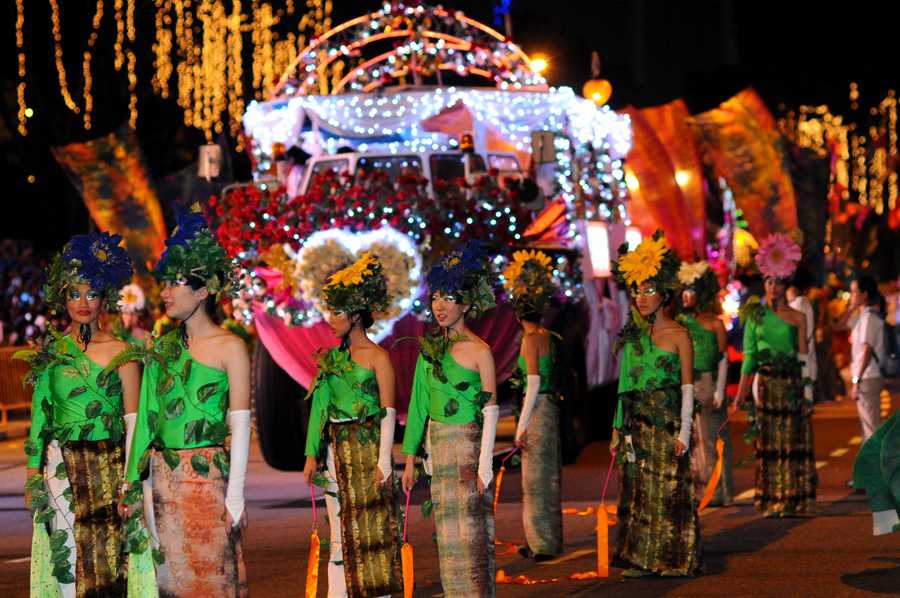
The annual Singapore River Hong Bao Carnival, which takes place at the Marina Bay Floating Platform along the Esplanade Waterfront Promenade, 15 days after the New Year’s Day each year; is also worth a visit! A huge flamboyant fair takes place to mark the arrival of the New Year, and it is brought to life by its fairyland décor and ambience, complete with intricate and elaborate floats of Chinese Gods, pagodas, legendary heroes, mythical creatures and cherry blossoms. Artisans, craftsmen, and performers fly in specially from different provinces of China to perform at the events, and visitors have a gala time viewing the performances and acrobatics, getting their fingers painted and palms read, and of course, enjoying the delicious food.
How to Reach: To witness the Singapore River Hongbao Carnival, take the MRT and disembark at the Promenade Station. It is a short walk from the Exit A to the venue. Alternatively, take the bus 75, 77, 106, 171, 531, 700A, 857, 960, 961, N, NR1, or NR2 and get down at the Raffles Avenue bus interchange which is a 2-minute walk away from the venue.
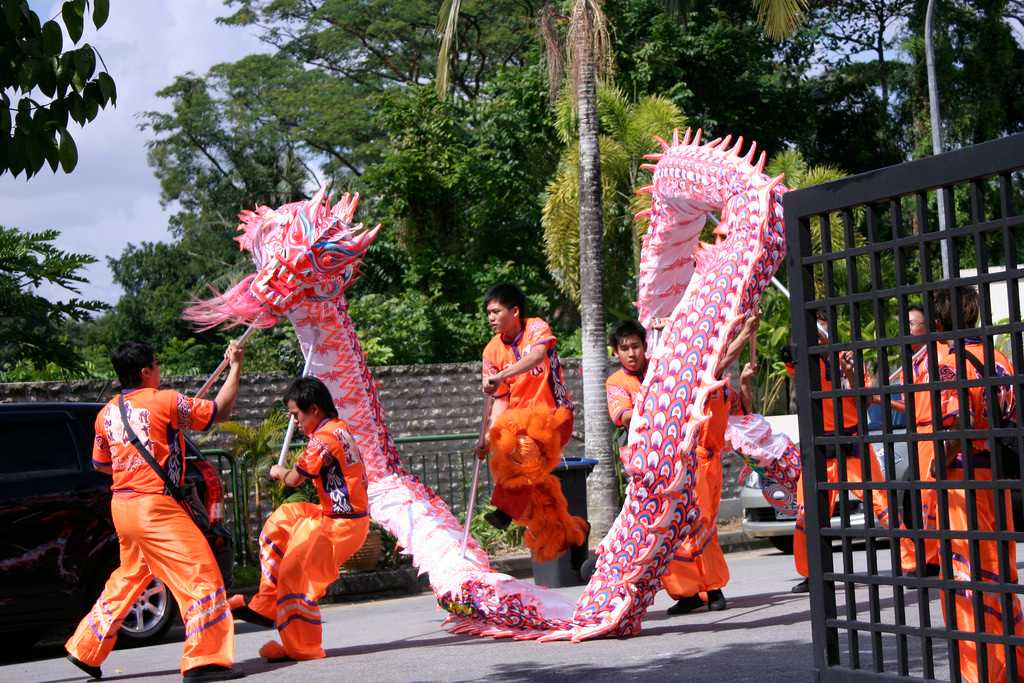
Tips
- Most supermarkets and stores remain closed from the Chinese New Year Eve until the second day of the festival, so it is wise to stock up on food. The stores at Little India remain open.
- Cab services are infrequent since the Chinese drivers stay on leave for two to three days and as a result, the Malay and Indian taxi drivers charge higher rates for providing services.
- Avoid wearing black clothes since they are considered to bring bad luck. Try and wear new clothes, preferably in red colour. Also, do not wash your hair.
- Using knives or scissors are also associated with ill fortune as it symbolises cutting away good luck.
- If willing to take part in the tradition of giving Mandarin oranges to others, make sure to give two of them and not one. This is because the Chinese believe that happiness comes in two’s and not one, and thus this is your way of passing good luck to others.
- Be careful to not drop your chopsticks, since it is a bad sign.
